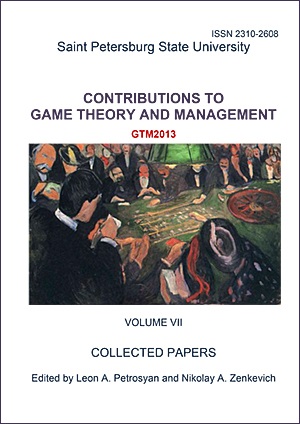Phenomenon of Narrow Throats of Level Sets of Value Function in Differential Games
Abstract
A number of zero-sum differential games with fixed termination instant are given, in which a level set of the value function has one or more time sections that are almost degenerated (have no interior). Presence of such a peculiarity make very high demands on the accuracy of computational algorithms for constructing value function. Analysis and causes of these degeneration situations are important during study of applied pursuit problems.
Keywords:
linear differential games, fixed termination instant, level sets of value function, geometric methods, narrow
Downloads
References
Downloads
Published
How to Cite
Issue
Section
License
Articles of "Contributions to Game Theory and Management" are open access distributed under the terms of the License Agreement with Saint Petersburg State University, which permits to the authors unrestricted distribution and self-archiving free of charge.




